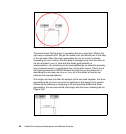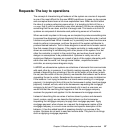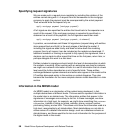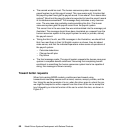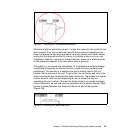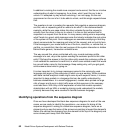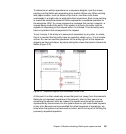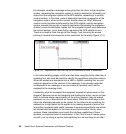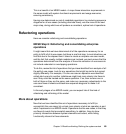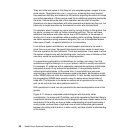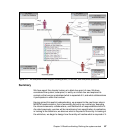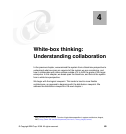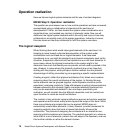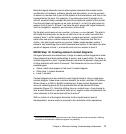
64 Model Driven Systems Development with Rational Products
For example, consider a message arrow going from the driver to the navigation
system, requesting the navigation system to route to destination, followed by an
arrow from the navigation system to the GPS satellite, requesting it to confirm
current location. In this case, route to destination becomes an operation of the
navigation system, while confirm current location does not. Why? Because
confirm current location is performed by the GPS satellite, and the navigation
system requests this as part of route to destination. Requesting the navigation
system to route to destination implies that the navigation system must determine
the current position, and it does this by requesting the GPS satellite to do it.
There is no need to think through all this though—just take only the arrows
pointing in towards the enterprise as the operations for the entity (Figure 3-10).
Figure 3-10 Sequence with red circle only on the arrowhead of route to destination}
In the initial modeling stages, which are often done using flip charts rather than a
modeling tool, one must be careful to identify the operations using this principle.
When the models are transferred into a UML or SysML modeling tool, we can
assign an operation to the receiver of the message, if one already exists that
corresponds to our message, or we can create an operation and it will be
assigned to the receiving class.
Incidentally, what do messages that represent requests of actors mean on this
diagram? Because we are not designing and building the actors, we do not take
them to indicate design requirements on the actors, however, they do indeed
represent
interface requirements on these actors. What the model says is that
these are effectively requests by the system for the actors to do something. As
awkward as it might seem for the system to be making requests of actors, this
formulation is actually quite useful, because it expresses specifically how actors
will interact with the system. In the case of non-human actors, that is, other
systems, these interactions must match the interface capabilities of those
systems, an important point of coordination. In fact, this is true of human actors
as well—just try asking a service representative for a service they do not offer!



